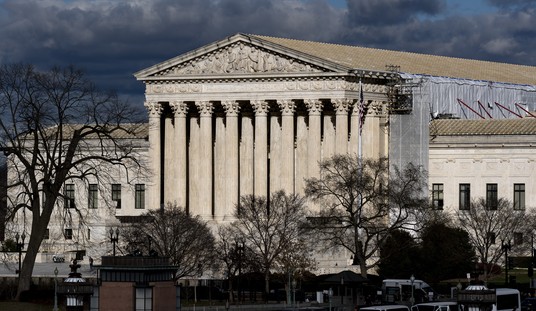Some fascinating data for you to chew on as Trump gets set to rally for Palin and Murkowski opponent Kelly Tshibaka in Anchorage tonight.
In a traditional primary system, I’d expect Palin to win her House primary and Murkowski to lose her Senate primary — badly. (She lost a Republican Senate primary in Alaska once before, remember.) Palin is broadly unpopular in her home state but she has universal name recognition and Trump’s endorsement. Typically that would be enough to get her over the finish line in an all-Republican contest against less well-known competition.
Murkowski, meanwhile, would be facing Republican voters with all sorts of baggage weighing her down. She declined to support Brett Kavanaugh for SCOTUS, remains pro-choice in a party that’s overwhelmingly pro-life, supported Biden’s progressive choice for Secretary of the Interior (which matters in Alaska), and has made a mortal enemy in Trump by criticizing him repeatedly. She wouldn’t stand a chance.
But Alaska no longer has the sort of traditional primary that confounded Murkowski in 2010. It has a ranked-choice four-way ballot. If you don’t understand how that works, take 60 seconds (fine, 76 seconds) to watch.
The candidate who gets the most first-choice votes doesn’t necessarily win. But the candidate who gets the fewest first-choice votes definitely loses. Which is bad news for Palin and good news for Murkowski.
Here’s the new poll of the House race from Alaska Survey Research. One candidate dropped out after the primary, which is why only three names are listed:
🚨Poll from Alaska Survey Research (7/2-5, 1,201 LVs, online, MoE 2.9%) of Alaska House special election finds:
Round 1
Peltola (D) 40
Begich (R) 31
Palin (R) 29Round 2 (Peltola vs. Begich)
Begich (R) 57
Peltola (D) 43Round 2 (Peltola vs. Palin)
Peltola (D) 51
Palin (R) 49 https://t.co/sfNG4ychFJ— Jacob Rubashkin (@JacobRubashkin) July 7, 2022
If that result stands up, Palin goes out in the first round — barely, falling two points short of fellow Republican Nick Begich. Begich then goes on to cream the Democrat in the final round, as one would expect in a state as reliably red as Alaska.
But look what happens if Palin edges past Begich for second place in the first round of voting. In that case, the seat goes blue as Palin falls just short against the Democrat in the final round. Why?
Because she’s unpopular. ASR finds her unfavorability rating at 60 percent. Clearly, a huge chunk of Republicans who prefer Palin are willing to vote Begich as their second choice over the Democrat but those who prefer Begich aren’t as willing to choose Palin as their back-up.
The same dynamic that sinks Palin in the House race saves Murkowski in the Senate race. She’s the first choice of around only a third of the electorate but the second or third choice of many, many Democrats and independents, which is good enough to get her reelected:
Then in the final matchup in RCV:
Murkowski 52%
Tshibaka 48%(A) This is a close result that suggests Tshibaka can definitely win. But (B) it's fascinating that Murkowski is even in this position because the crosstabs have only 17-18%(!) of Rs voting for her in any round!
3/?
— Geoffrey Skelley (@geoffreyvs) July 8, 2022
If in fact Murkowski ends up winning narrowly while Palin ends up losing, it could have long-term consequences for how states in the lower 48 hold their primaries in the future. Ranked-choice voting has been touted as a moderating influence on elections for the obvious reason that voters in each party will prefer the moderate option in the other party as their second choice instead of fringier types. Murkowski getting reelected and Palin getting sent home would be proof of concept. Centrists in both parties will begin agitating for ranked-choice systems in their own states to try to keep the crazies on both sides out of office.
Not surprisingly, it turns out that Alaska’s new ranked-choice ballot was championed in 2020 by — ta da — allies of Lisa Murkowski, who saw its potential to help their candidate overcome a formidable challenge from the state’s right wing.
The ballot initiative, which passed narrowly by a popular vote, was pitched to Alaskans as a cure for gridlock and partisan polarization in a state that has one of the largest shares of independent voters in the country and prides itself on bucking national voting trends.
It also happens to have been pushed in part by allies of Murkowski — including Scott Kendall, who is now running a super PAC, Alaskans for L.I.S.A., that supports her candidacy. (Officially, the name includes an acronym for “Leadership in a Strong Alaska.” Under federal election law, it’s illegal to use a candidate’s name in the name of a super PAC.)…
By Lottsfeldt’s reckoning, Murkowski ought to emerge with about 55 percent of the vote after voters’ preferences are taken into account, while Tshibaka, whose positions on issues like abortion might turn off moderates, is likely to finish at around 45 percent.
Tshibaka’s campaign is shrewdly urging its own supporters to leave their ballots blank apart from selecting her as their first choice, recognizing that conservative Republicans are otherwise apt to name Murkowski as their second choice over the Democratic alternatives. And those second-choice votes, if cast, could be the difference between Murkowski beating Tshibaka or falling just short.
One other thing Murkowski has going for her — and which may make Alaska’s results an outlier even among ranked-choice systems — is that the state has an outsized share of independent voters, many of whom appear to be true independents rather than de facto Democrats or Republicans who identify as indie for whatever reason. If the race ends up being as tight as 52/48, it’s those centrist votes that’ll make the difference for Murkowski. Which means her victory might not be replicable by moderates in states that are less “mavericky” than Alaska. Stay tuned.








Join the conversation as a VIP Member